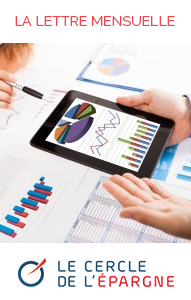The Aluminium’s future
1. In the short term, the trend is downward.
In one year, the production of aluminum has declined by 5%.
The downturn in the United States and thus the difficulties of Payas weigh on Asian demand for aluminum.
Among the industries using aluminum,
• • transport (cars, planes, trucks, trains, boats, etc.). • • packaging (cans, foil, cans, tins, aerosols, etc.). Including food packaging ; • • construction (windows, doors, gutters, etc.). • • consumer goods (appliances, kitchen utensils etc.). • • the son electrical (conductivity of aluminum is only 60% of that of copper, but aluminum is lighter and less expensive) ;
• The very pure aluminum (99980 to 99999%) is used in electronics and CDs.
The crisis affects all of these areas and primarily the automotive and construction. China, the largest producer of aluminum, is mainly concerned with the decline in demand. The swelling stocks triggered a collapse in prices in late 2008.
the stock now exceeds 1 556 000 tons.
Major producers have reduced their production capacity. For example, Alcoa, one of the largest world producers, has already reduced by 15% its production of aluminum. Brazil’s Vale to follow in his closing carrément smelter near Rio de Janeiro (Valesul). Unable to absorb the costs, electricity, there is very expensive.
In China, the biggest producer, Chalco, has stopped 38% of its production capacity of alumina. Russia’s UC Rusal has suspended production of its alumina refinery Zaporozhye, as its complex Aluminia Ukrainian …
The spot price in January was 14 euros per tonne in 1540 against 3410 euros in July.
The current balance is expected to reach Euro 2000. 40% of producers produce at a loss which could lead to mergers or bankruptcies.
2. medium-term trends
The plans for the West are expected to foster railway construction. The challenge of emerging economies is to reorient their economies by promoting domestic demand. In contrast to the 1997 crisis, they have abundant reserves.
Given the infrastructure needs, the demand for aluminum is expected to rebound.
The need to develop means of transport cleaner supports the aluminum is lighter than steel while having the capabilities of resistance. The priority given to sustainable development should lead to an increase of aluminum which is also easily recyclable.
The production of aluminum requires high energy consumption. The decline in current helps to reduce the costs of producers. However, any economic recovery will lead to upward pressure on energy prices resulting in higher prices for aluminum. The increase in years 2007/2008 were due to the oil even though China has increased its exports by more than 40%.
The increase in inventories during the year 2008 has caused a fall in year-end. The improvement of the market should cover the whole of 2009.
The market is frankly excess according to Michael Widmer (BNP Paribas). We should expect a surplus of 850 million tonnes for 2009 and 1 400 million tonnes for 2010. The downward pressure on prices will remain strong. The price of a tonne should not exceed 1700 euros in 2009. Depending on the restructuring and recovery, the price could resume an upward trend from the second half of 2010.
Partagez






